‘Tailor-Made’ Partition: Saga of an Orchestrated Disaster

Seventy-six years after the Partition of the Indian subcontinent, we are still a long way from understanding the complex ways in which this event affected the everyday lives of people and communities then, and how it still continues to shape our collective consciousness, politics and ways of being. This series, featuring scholars of partition studies from across the subcontinent is an attempt at exploring the complexities and contradictions of the momentous event that forever changed the contours of this region. This article looks into the aftereffects of Partition in the region of Bengal.
In August this year, India and Pakistan celebrated 75 years of independence and their emergence as nation-states on the map of South Asia. In 1947, "United India" got vivisected, in which Punjab and Bengal experienced the divide. This political separation compelled at least 15 million religious minorities to leave their respective "homelands" in search of safe shelters and security of life, and to become a part of the majority community. It remains one of the largest human displacements in the history of South Asia. Yet, the idea of building a nation with a certain homogenous religious community did not click in the case of Pakistan. The aspiration of the Bangalees to make a state based on linguistic identity led to another division in 1971, resulting in the emergence of a third nation-state: Bangladesh. In this process, the Bengal borderland experienced an exodus of another 10 million people. Therefore, from the 1940s, Bengal witnessed the migration of Hindus, Muslims and Buddhists, Bangalees and non-Bangalees, tribal refugees through the "open," "porous" and "notional" borderlands, officially up till the signing of the Indira-Mujib pact of 1972. On the Indian side, the bordering states of east and northeast India such as West Bengal, Assam, Tripura, hilly regions of Mizoram and Meghalaya became the den of the Partition-displaced refugees and sharanarthis during the Liberation War. In East Bengal/Pakistan, the inflow of the incoming Muslim refugees and their resettlements led to the spatial reorganisation of the urban centres, existing cities, some mufassil towns, and other suburban areas.
Interestingly, if we look at the academic writings on Partition, from 1950s to 1960s, some historians and political scientists seemed comfortable in terming this incident "achieving independence" from the colonial rulers. Social scientists started using the word "Partition" unhesitatingly from the 1970s. Therefore, it would be intriguing to investigate the key reason behind such portrayal. Let's question ourselves: what are the popular imageries of independence/Partition that we tend to keep in mind? Jawaharlal Nehru, the first prime minister of India, in his "Tryst with Destiny" speech, jubilantly mentioned that India was born "at the stroke of the midnight hour… to life and freedom." Muhammad Ali Jinnah, indeed, in his first lecture at the Constituent Assembly of Pakistan, declared the idea of maintaining "complete sovereignty" in Pakistan. He portrayed a liberal view of nationhood by saying, "We are starting with the fundamental principle that we are all citizens and equal citizens of one state." Hence, from the ideological perspective, it is noticeable that both the nations were trying hard to create a definite image, and acceptance of culture suitable to a modern state system, to communicate their ideologies to the world.
But what happened at the ground level? Why use the term "tailor-made" in describing Partition? The line that divided the Indian subcontinent was the Radcliffe Line. Instead of the concept of "natural frontier," drawing "lines" as "political borders" was a European concept. The task of imagining two nations by drawing a "notional border" was assigned to Sir Cyril Radcliffe. The terms of reference of the commission were "to demarcate the boundaries of the two parts of Bengal on the basis of ascertaining the contiguous areas of Muslim and non-Muslim." When Radcliffe's proverbial red pencil was moving in zigzag movements to create new nations, he did not think he was dividing people. To him, it was "just a line." In his report, the sentences were like "…a line shall be drawn along the boundary between the thana of… a line shall then be drawn from the point… a line should run… the line should then turn…" It was this "running" and "turning" "line" that designed borders and divided people. The line on the map was more cartographic than real.

Why describe this incident as an orchestrated disaster? Since Partition was planned on religious lines, both Hindus and Muslims in India and Pakistan migrated as refugees to the other side of the border to become members of the majoritarian community in their "promised land," to get rid of their "minority" status in the country of origin. But in most of the cases, the refugees faced multiple layers of hazards and discriminations; the dream of "homecoming" turned into disillusionment for most of them, and they were rather treated like outsiders. In the three major refugee absorbent states of eastern and northeast India, i.e. West Bengal, Assam and Tripura, the connotations to define a Hindu refugee family migrating from East Bengal were udbastu, chhinnomul, sharanarthi, bangal and bhatia (in West Bengal), Mymensinghia, bhogonia, Bongals or Bongali, bohiragoto, bideshi (in Assam), and wansa or wansan sa in Kokborok – wanjoi means Bangalee and sa is son (in Tripura). In Pakistan, the popular terms to denote a refugee are muhajir or mohajer, panahgirs (in Urdu newspapers), refu-rifu, malaun and ghoti. Most of the connotations often depict a picture that they could never get rid of the idea of having different, diverse, multiple identities. One unique example of such derogatory treatments may derive from naming a plant as refugee lota in the Barak/Surma valley of Assam, in Cachar. Refugees were compared with a plant, which grows fast without having any particular use. The Hindu and Muslim refugees, the actual offspring of Partition, neither managed to get equal treatment in the societies they migrated to, nor did the brethren of their own nation-state welcome them with open arms.

What happened on the policymaking fronts? After World War II, some international humanitarian organisations and aid agencies such as the UNHCR started working among the displaced persons, refugees and asylum-seekers, to promote peace, security and friendship among the nations, and provide protection and assistance to the refugees from 1950. The idea of the 1951 UN Refugee Convention was planned, and the treaty was signed in this particular background. India, being the largest refugee-absorbent country in South Asia, chose not to sign the 1951 convention. Being the prime minister, Jawaharlal Nehru's decision surprised the world as he announced that India would take the fullest responsibility for its refugees, without taking help from the International Refugee Organisation (IRO). Later, India decided not to be an official signatory to the 1967 Protocol Relating to the Status of Refugees. Nehru was probably hesitant to consider whether India would be able to maintain the minimum standard of hospitality towards refugees or not, and he decided to keep the issue as an internal matter. Likewise, Pakistan and Bangladesh didn't ratify the 1951 Convention or the 1967 Protocol. These countries never treated refugees as "resources for nation-building." The UNHCR could never work actively and help them in developing national laws or proper structures because these countries hadn't ratified the convention. Therefore, financial support to these countries from high-income countries in the cause of supporting refugees has always been ad hoc or indirect.
What were the actual policies towards the refugees and other minorities in India and Pakistan? While dealing with issues of nation-building, India officially tried to shape discourses of secularism, caste identities, ideas about majority-minority relations and transborder migrations. Its centre government was desperate to discourage migration on the Bengal side. Nehru tried to convey the impression that the overall situation in East Bengal was improving when it was deteriorating. The relief and rehabilitation policies changed time and again, and to obtain such benefits from the state, a migrant had to first prove his or her family members as displaced persons, migrant, evacuee or refugee, and produce documents like migration certificate, citizenship certificate or any relevant papers to procure a job through the option system. But the document regime was too troublesome for the lower-middle class and lower class/caste refugees.
Surprisingly, in both the countries, the policies of the centre towards the eastern border were visibly different from those for the western side. In East Pakistan, all the Muslim refugees didn't receive equal treatment. The politics of connection to one culture or one's "otherness" played vital roles to the authorities. The top administrative posts were mostly held by West Pakistanis, and they were prompt in providing relief measures and rehabilitation to the Urdu/Hindi-speaking Biharis. Similarly, for the Bangalee provincial officers, the issue of "linguistic resemblance" became the "positive bond" to understand the crisis of Bangalee refugees. A discriminatory attitude was visible in everything: the nature of distributing requisitioned and acquisitioned houses, evacuee properties, etc. In some areas, in which the refugees were sheltered and later rehabilitated, the host communities turned tremendously hostile to them as they did not want to share their lands and resources.

What about the experience of Hindu refugees who migrated to the Indian states adjacent to the Bengal borderland? The upper class, elite Hindus generally enjoyed political-economic power as a social category in East Bengal. After migrating to West Bengal, they suddenly found themselves stranded on the wrong side of the border. Even the educated middle class, who used to have their cultural capital, realised that the land to which they had migrated was not like the place they had dreamt of. I have interviewed people like Shefalika Pathak, who said Partition was like a blessing to her. She migrated from Netrakona, struggled hard to get proper education, and became the headmistress of a government school in Shahid Nagar Colony. Refugees who migrated to Assam faced discrimination in receiving relief and rehabilitation facilities from the state government. The reason behind this kind of mentality was evident in contemporary sources. For example, the Assam Tribune published on August 2, 1949, "The inflow of Hindu refugees in Assam was so enormous (that) the Hindu refugees would apparently create a Bengal in this province." The community crisis was more acute in Tripura, as the hegemonic tendency of the Bangalee refugees made the tribal domiciles insecure. Bodhrong Deb Burma, a Kokborok schoolteacher by profession, opined how they considered the Bangalee refugees as a threat to their existence. Partition left a blow in Shillong, too, which used to be a hub for the English-educated East Bengal Hindus. Sushil Nag, a former gaonburah (village headman) of the Keating Road area, narrated how the Bangalee officers had to migrate to other states in India, chiefly after the creation of Meghalaya as a separate state.
What was there on the other side of the coin? The indigenous communities of the Chittagong Hill Tracts (CHT), Khasi and Jaintia Hills, Garo Hills suffered immensely because of Partition; no regulations and official notifications were there for the paharis. For example, the Chakma and Hajong families of CHT remained as one of the worst sufferers of Partition. They had to migrate to Arunachal Pradesh, as a result of the construction of the Kaptai Dam in the Pakistan period. The Arunachal Pradesh Chakma Gaonburah Association published a statement on August 23, 2021, "We are very worried about our future as we and our forefathers have suffered long enough because of Partition. We oppose any move to disturb, dismember or dislodge the Chakma community from the state any further." Therefore, the members of those jummo families still perceived Kaptai Lake as a site of a heart-breaking event called Bor Porong or "the great exodus." The Census of Un-Rehabilitated Displaced Persons conducted surveys in 1959-1960, to understand the number of refugees who were rehabilitated in Dacca, Narayanganj, Khulna, Chittagong, Chandraghona and Kaptai. This report stated clearly that the rehabilitation work completed up till 1960 was not impressive. The refugee migration process was endless to and from this region, yet such physical, practical and professional vacuums made the absorption procedure comfortable in East Pakistan. Only the Biharis could never be a part of the traditional Bangalee society of East Pakistan. As Urdu speakers, they preferred West Pakistanis over their Bangalee neighbours. Throughout the 1950s and 1960s, they became "non-Bangalee agents" of the West Pakistani ruling class. Khalid Hussain, once a resident of the Geneva Camp in Dhaka, narrated how they suffered for different reasons both under the banner of Pakistani and Bangladeshi nationalism.

What are the issues, which remained unfinished after the 75th year, that Bangladesh, India and Pakistan are facing as the "long-term impact of Partition"? Partition gave birth to new socio-political units like camps, colonies, enclaves, and borderlands, among many others. But none of the nation-states are making policies and arranging protective measures to save the minorities from the insecurities of diverse kinds of identity politics. Simultaneously, nation-states are terming the "illegal immigrants" "criminals," when most of the political parties often employ them in unlawful activities, use them as vote banks by providing them with voter cards or other national identity cards. These complexities and contradictions can be noticed in policymaking, too. For example, the introduction of NRC and CAA in India evoked diverse reactions towards its minorities and different minority communities from the neighbouring countries. But if we look at films like Simantarekha by Tanvir Mokammel or Shankhachil by Goutam Ghose, the narratives often portray a picture of hope, the legacy of the shared history and composite culture of Bengal.

Though feelings of uncertainty and insecurity are there, citizens of all three countries are curious to know more about the other side of the border. For example, Anam Zakaria, a renowned oral historian from Pakistan, wrote in her book 1971 that when she came out from the airport during a visit to Bangladesh, "… busy looking around, trying to take in the first sights of Dhaka," she and her partner saw a security van for their protection, and "within the first twenty-four hours of our arrival, we would witness first-hand the bitterness and often sheer hatred against Pakistanis" (Pp. 22-23). Probably because of the positive role that India played in 1971 and the consequent bonding, the relationship between Bangladesh and India, especially between the two Bengals, continued to remain warm. But Pakistan is still like a "dark zone" to most Indians. Manimugdha Sharma, fellow at the Institute of Asian Research, School of Public Policy and Global Affairs, University of British Columbia, echoed this by saying, "We Indians and Pakistanis bond so well outside South Asia; it's a shame that we can't do it in the subcontinent." In reality, Bangladesh, India and Pakistan continued to practise majoritarian politics even after 1971, and therefore they remained hotbeds of unending politics over minorities, illegal immigrants and other asylum-seekers, especially over their changing identities and citizenships.
Anindita Ghoshal is associate professor of history at Diamond Harbour Women's University in Kolkata, West Bengal, India.

 For all latest news, follow The Daily Star's Google News channel.
For all latest news, follow The Daily Star's Google News channel. 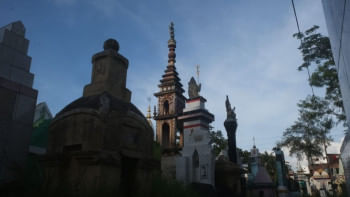
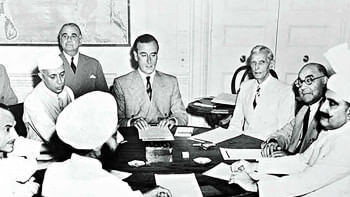
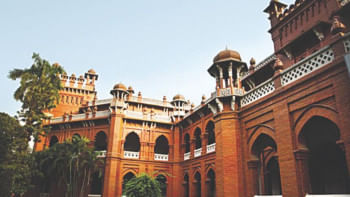



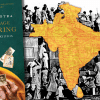
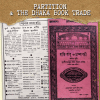
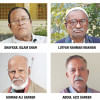



Comments